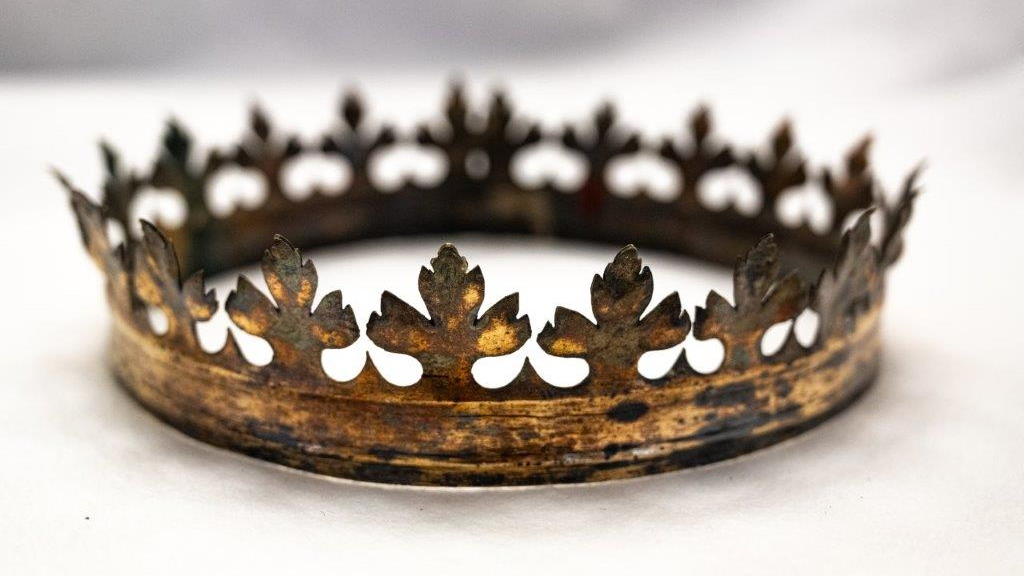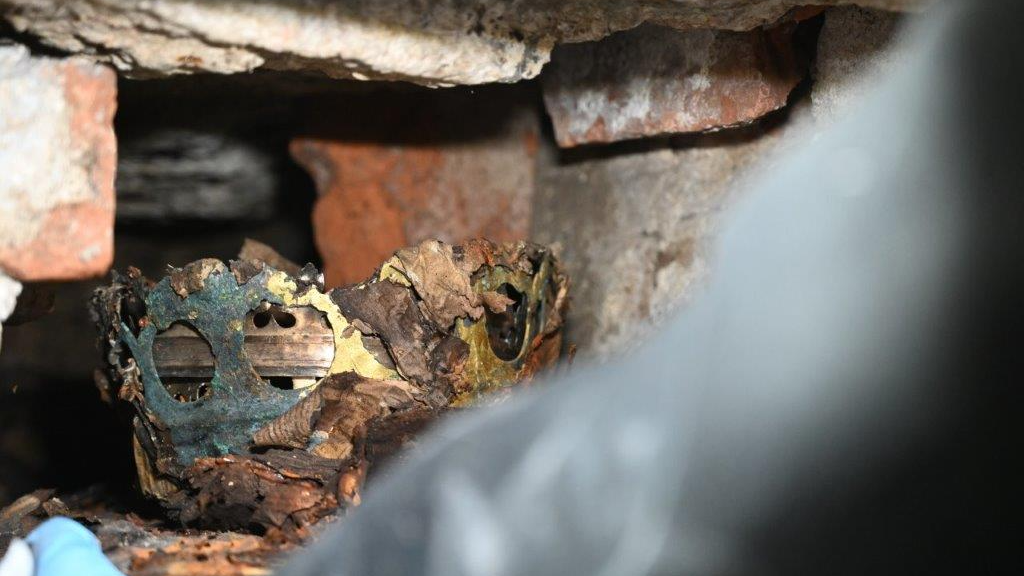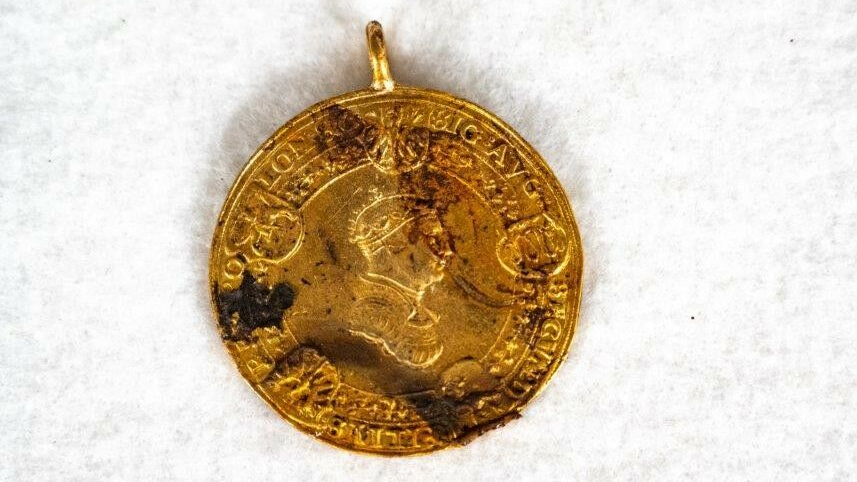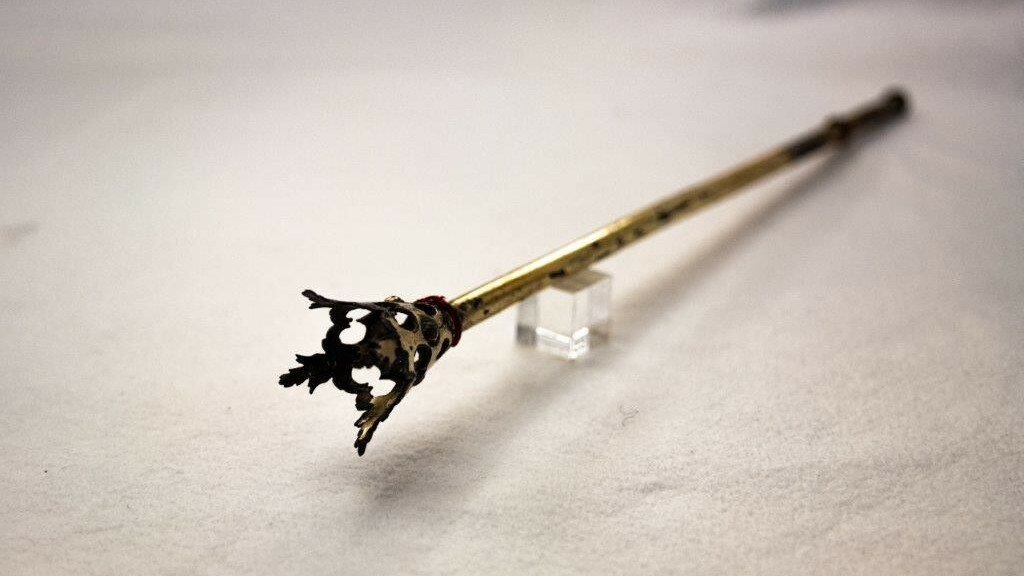
A set of 16th-century royal burial regalia concealed in a niche under a staircase for nearly a century has been recovered from the Vilnius Cathedral in Lithuania. The gold crowns, rings and other accessories have been missing since 1939, when they were hidden at the start of World War II.
A team of experts found the objects on Dec. 16 while using an endoscopic camera to peer into holes, fissures and cavities in the walls of the cathedral's underground chambers. The discovery was announced at a press conference Monday (Jan. 6).
In an email to Live Science, Mykolas Sotincenka, coordinator of the Vilnius Archdiocese's communications, explained that the treasures were initially collected in 1931 after a flood damaged the cathedral's crypt, revealing the sarcophagi of three key 16th-century rulers in their burial finery.
The royal insignia — which had been made for funerary purposes and placed into the sarcophagi at the time of their burial — included several crowns, rings, chains, a scepter, an orb and coffin plaques that identified the rulers as Alexander Jagiellon, the Grand Duke of Lithuania and King of Poland, and two of the wives of Sigismund II Augustus, who was also a Grand Duke of Lithuania and King of Poland: Elisabeth of Austria (also known as Elizabeth Habsburg) and Barbara Radziwiłl.
The Jagiellon and Habsburg dynasties were among the most powerful families in Europe, Sotincenka said, and they ushered in the Polish Renaissance or "golden age."
Related: 1,800-year-old silver amulet could rewrite history of Christianity in the early Roman Empire



"The discovered burial insignia of the monarchs of Lithuania and Poland are priceless historical treasures," Vilnius Archbishop Gintaras Grušas said in the statement, and are "magnificent works of goldsmithing and jewellery."
A newspaper dated September 1939 was wrapped around the royal accessories before they were hidden in a niche under a staircase in the Vilnius Cathedral crypt. Although experts knew from historical records that this cache of precious objects existed, it took several attempts over the years to find it.
"These symbols are important both for the State and for each of us," Rita Pauliukevičiūtė, director of the Vilnius Church Heritage Museum, said in the statement, "as a sign of the strength of our roots."
Lithuania has few authentic artifacts from this important historical period, Sotincenka said, so the rediscovery of the royal regalia in the Vilnius Cathedral proves that this was the burial ground for the elite of the Grand Duchy of Lithuania.
The treasures have been documented and cataloged, but they will undergo restoration before being displayed publicly later this year.







